Fueled by federal funds, Upper Valley outdoor education opportunities grow
| Published: 10-15-2023 2:57 AM |
SOUTH STRAFFORD — The assignment for a Newton School first grade class on a recent Tuesday morning started with a walk.
Before the 16 pupils began to climb the hill behind the school, Becky Proulx, an outdoor educator, warned them to stay away from a yellowjacket nest she’d staked out and invited them to collect items on their walk that they could use to make maps.
“We’re going to put on our owl eyes for looking,” said Proulx, who also urged them to use their raccoon feet and coyote noses to pay attention to the world around them.
“Let’s go!” one boy shouted, and a few of the children charged up the hill. Others grabbed onto the lesson, picking up rocks, sticks and leaves. “I found another one that has a different texture,” one child told another as he picked up a leaf.
Scenes like this one with children heading outside to learn were novel not too long ago, even in the Upper Valley, where getting outside is a part of daily life. But after the coronavirus pandemic, when nearly all students spent time outdoors during the school day, outdoor learning has taken off. And an influx of federal funding has enabled school districts to expand their outdoor learning options.
South Strafford is a notable example. Proulx works with all the classes up to fourth grade, and the district used ESSER funding to erect a timber-framed outdoor classroom that opened after a ceremony on Sept. 28.
Hartford School District, likewise, plans to build a classroom on a 15-acre parcel the district owns on Christian Street, between Wilder and Hartford Village, and to expand outdoor offerings in all grades.
“I think it was one of the few positive outcomes of the pandemic, that it was safer to be outside,” Tom DeBalsi, superintendent of the Hartford School District, said in a phone interview.
Article continues after...
Yesterday's Most Read Articles
 Homeless Upper Valley couple faces ‘a very tough situation’
Homeless Upper Valley couple faces ‘a very tough situation’
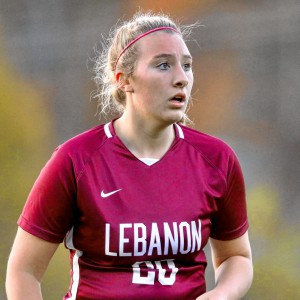 Lebanon’s Jewell back from auto accident, more aware of ‘drowsy driving’ dangers
Lebanon’s Jewell back from auto accident, more aware of ‘drowsy driving’ dangers
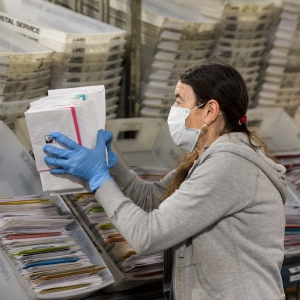 Plan on track to ship Upper Valley mail to Connecticut for sorting
Plan on track to ship Upper Valley mail to Connecticut for sorting
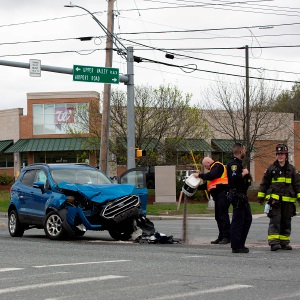 West Lebanon crash
West Lebanon crash
 Crane crash on Interstate 89
Crane crash on Interstate 89
Ottauquechee School, one of the district’s three elementary schools, was a bit of a pioneer in outdoor learning, operating one of the first “forest kindergarten” programs in the area. Kindergarten classes started to spend one full day each week outside year-round in 2013. Dothan Brook School, another of the district’s elementary schools, started a third grade outdoor learning program a few years before the pandemic.
“I support any of the classrooms that want to be outside,” Dothan Brook Principal Rick Dustin-Eichler said in a phone interview.
The pandemic gave every educator and child a taste of outdoor learning, he said. It wasn’t for everyone, but it worked so well for some students and some subjects, particularly science, that it’s become a fixture.
The 15-acre parcel on Christian Street was given to the school district in 1990, and district officials have debated how to use it since then, DeBalsi said. In the past couple of years, the Hartford Area Career and Technology Center has used it for training students to use forestry and agricultural equipment. About 5 acres of the parcel is open, with the rest wooded.
Several of Hartford’s schools sit on parcels too small and too heavily paved to enable much in the way of outdoor learning. DeBalsi and others in the district envision the Christian Street land as a place where entire classes can spend a full day engaged in outdoor study. That could include a wide range of activities, everything from science classes to cutting and using ski trails through the woods.
The district has $400,000 in ESSER funding, money distributed to schools as pandemic relief, set aside for the project, which likely wouldn’t have happened without the federal money, DeBalsi said.
Plans call for an enclosed classroom building with restrooms, a necessity for programs spending more than a class period at the site. That will necessitate a well and an on-site septic system. There would also be a shed to store equipment.
The Hartford planning and zoning boards have approved the project, but an adjustment to the hours the site could be used, to include weekends, is still pending. The project is on the Hartford Planning Commission’s agenda for Monday evening. The total cost of the project will become clearer once it gets its permits, DeBalsi said.
At one of his first jobs in education, DeBalsi’s students built garden plots, 10 feet square, and planned out what they would plant. That was more than three decades ago, and outdoor learning has expanded dramatically since then.
Becky Proulx’s work with the Strafford first graders offers a demonstration of how sophisticated outdoor learning has become.
The Tuesday lesson continued a unit on mapmaking. Once at the circle of log seats in the field, Proulx had the children sit quietly and listen for a moment, then arranged a piece of canvas as a rectangle in the middle of the circle. The children helped her make a map of their classroom, where they work most days with teacher Morgan Fisk.
“How many desks are there?” Proulx asked. Then moved on to ask about the number of chairs and of windows.
She was encouraging the 16 children present both to think about the shape of the world they inhabit and to manipulate numbers in their heads but with physical objects in their hands that stood in for desks, chairs, windows and other classroom features.
Then she and Fisk asked them to form small groups of three or four.
“My invitation to you and your small group is you’ll get a smaller piece of sheet and you’ll make a map of how to get from the school to here,” Proulx said.
She asked them to describe what kinds of things you put on a map, and a boy piped up to say that they should depict things that are always there and will be there in the future.
The groups moved away from the circle and spread their fabric out on the squelchy ground, rough with stubble and wheel ruts from recent mowing. Kids ran into the nearby trees to gather sticks, rocks, bark and other objects to represent the places on the map.
They also found caterpillars and centipedes and spiders.
“Becky! I found a woolly bear!” Wilder Zoerheide shouted, showing it curled up in his palm. One of his teammates asked if he was going to put it on the map. “Yeah! He’s gonna be a teacher!”
Once they were done, the full group walked around to each map and each small group gave a brief presentation, describing their maps.
“Heidi, will you walk us all the way from the school to the outdoor space (on the map)?” Proulx asked.
Heidi Moore walked her fingers from one side of the fabric to the other (“Bedoo, bedoo, bedoo, bedoo, bedoo,” she said, in time with her walking digits) across a landscape of grass, sticks, torn up leaves and other materials.
After each presentation, a group member would ask, “Any questions?” like wee professors.
“I think it’s so great for their bodies to be outside,” Fisk said while the children were putting their map materials back where they found them. “This just gives them time and space to learn how their bodies move.”
Two decades ago, children would have played mostly outside while learning and encountering technology in their classrooms.
Those relationships are now reversed, as technology and the sedentary nature of using it have become the norm.
“I think a lot of kids now don’t get the chance to play outside as much,” Fisk said.
Outdoor learning touches every area of the curriculum in Strafford, from the basics of listening and speaking, to literacy, numeracy and science.
Every first grader carried a green backpack, and inside they had journals in plastic bags to keep them dry. While most of the children ran around collecting materials, one girl sat on her log and drew or wrote in her journal, an unusual kind of freedom for a 6-year-old.
“Third and fourth grade do lots more writing and drawing,” Proulx said. By fourth grade, students work with the nonprofit White River Partnership, making and setting crayfish traps and studying plant and animal life.
Proulx has been an outdoor educator her whole career, since the 1990s. She’s now affiliated with the Vermont-based Four Winds Nature Center, which dispatches outdoor educators around northern New England.
There’s a difference between outdoor learning and having a class outdoors, though one is a gateway to the other.
To be successful, it needs buy-in from school leaders, teachers, parents and the entire school community.
“If they’re out there and they’re investigating,” she said, “I think that is a different sort of learning than let’s just go outside.
“It’s about inquiry-based science and finding out ways for kids to do something with that,” Proulx added.
She also works in schools in Lebanon and Enfield. Enfield Village School officials posted to social media last month a photo of the school’s new timber-framed outdoor classroom.
At Newton School, Principal Tracy Thompson sees outdoor learning as an integral part of the school, with strong support from teachers, parents and students.
Before the timber frame went up, the kindergarten had its own wooded classroom, with logs for seats and an easel for lessons. The children have built lean-tos against trees and the seats are arranged around a fire pit.
The contrast between this space under the trees and the way education has been shaped over the past two decades, with federal accountability measures tied to standardized test scores, seems hard to reconcile. In Thompson’s view, they go hand in hand. If children are learning, it doesn’t matter where.
“I think we feel like our students learn better when they learn in their best environment,” she said.
Alex Hanson can be reached at ahanson@vnews.com or 603-727-3207.

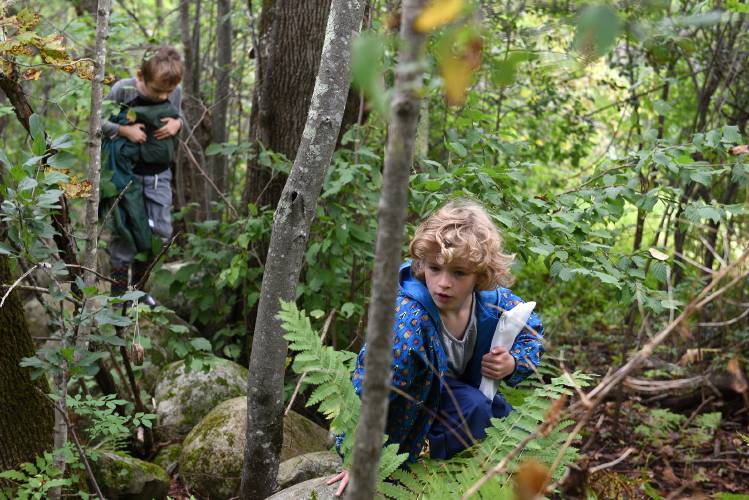
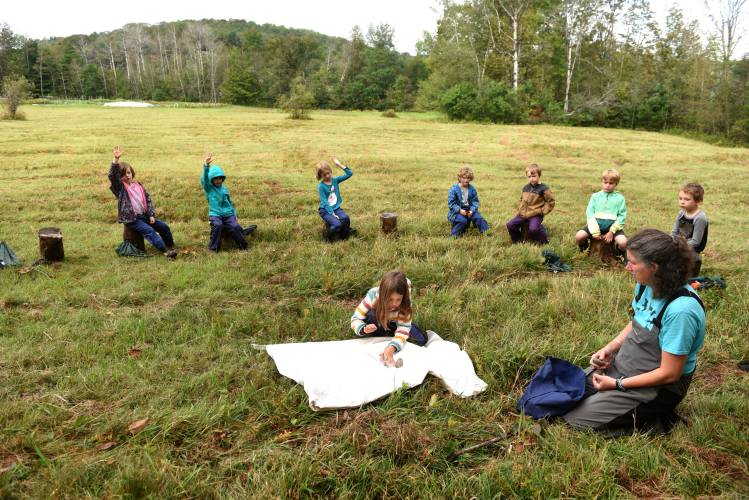
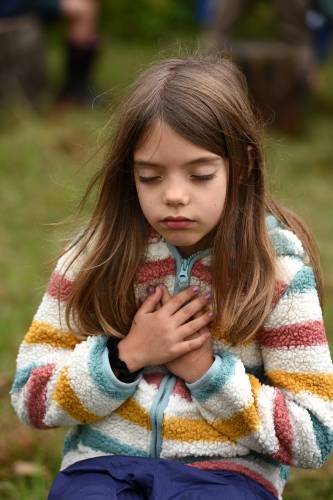
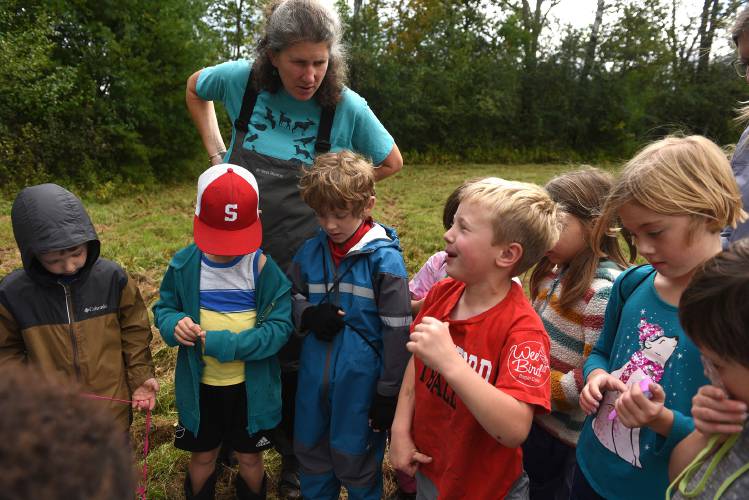
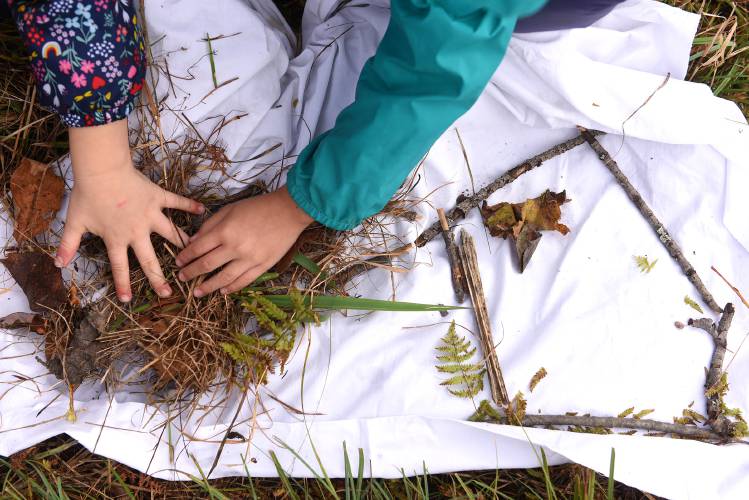
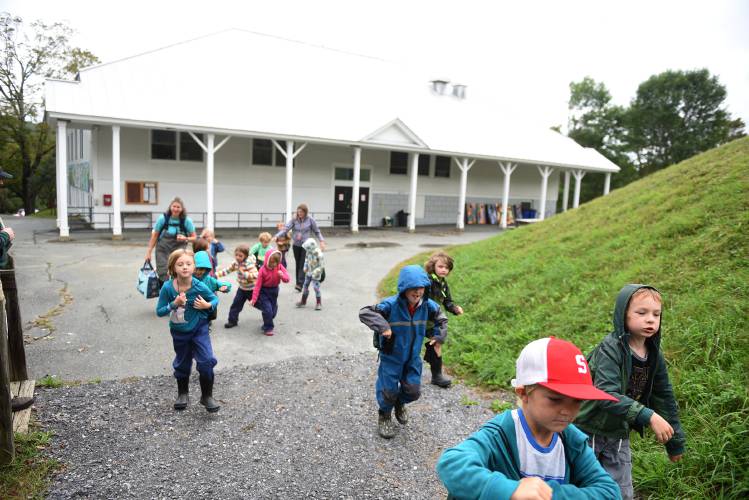
 Kenyon: Constitutional rights should trump Dartmouth’s private interests
Kenyon: Constitutional rights should trump Dartmouth’s private interests
